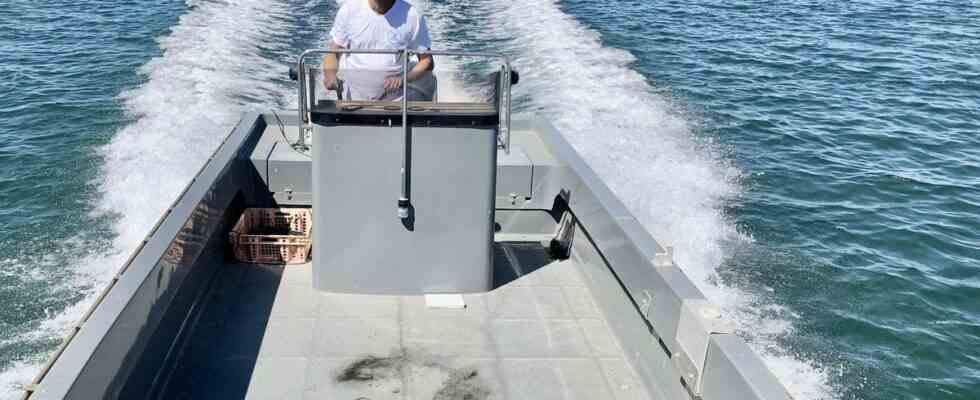“You are all going to break your face”, thundered the elders when Cédric Ketani and the thirty or so other shellfish farmers from Port-Saint-Louis-du-Rhône (Bouches-du-Rhône), in the Camargue, embarked on oysters . It was in 2015, and it is clear that the elders are not always right. Since then Cédric Ketani has been piling up the distinctions at the Salon de l’agriculture. His oysters, “the queens of the Camargue” won bronze in 2017, gold in 2018 and silver this year. “My father, who set up the farm, did not believe it,” smiles today the young thirty-year-old with a tanned complexion and in work clothes: shorts, T-shirt and fishing boots. If they arrived last on the production of oysters in the Mediterranean, they are not the only ones. For a long time, it has been produced in the Etang de Thau, near Sète, or in Leucate, in the South-West.
A success partly linked to the topography of the place, located at the confluence of the Rhône. “To proliferate well, shellfish need a supply of fresh water, rich in nutrients. Here, there is the mixing of the Rhône and that is what makes the wealth”, explains Cédric Ketani. More iodized than that of the Atlantic, fleshy as desired due to the addition of nutrients, its Camargue queens are now exported throughout France, but also to Spain, Belgium and Italy. Distributions organized by “Le Vivier Carteau”, the company that plays the intermediary, buying the production of other oyster farmers in the basin. But here, it’s not just about oysters, the parks also offer pride of place to mussels and there are also a few clam fishermen. They supply restaurants, supermarkets, and scalers.
Factories, tankers and container ships
However, at first glance, the site does not look idyllic. On the neighboring coasts stand the imposing industrial complex of Fos and the port of Marseille. A handful of nautical miles from the oyster and mussel beds, gigantic oil tankers and container ships wait on their anchors before loading or unloading their goods. Activities without consequences on the quality of the water, assures the oyster farmer “We have a water quality rated A [sur une échelle de A à C]. But because of the industrial activity we are preventively downgraded to B, which imposes a time in the rinsing bath. If you are rated C, your production simply cannot be consumed,” he explains.
The development of this production has put the shellfish farming activity back on track in Port-Saint-Louis-du-Rhône. “Out of the hundred parks [chaque parc compte 1.500 cordes de culture], twelve remained for a long time on sale”, explains Cédric Ketani who “works” on eight of them. “But in recent years, the trend has reversed. There is now a waiting list to enter. And Camargue oysters have earned their title of nobility.

